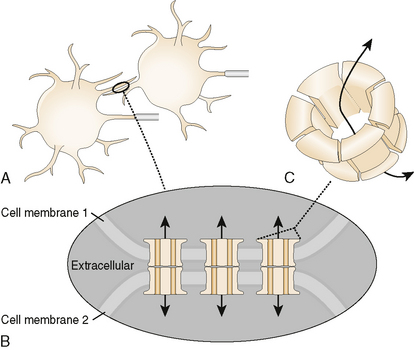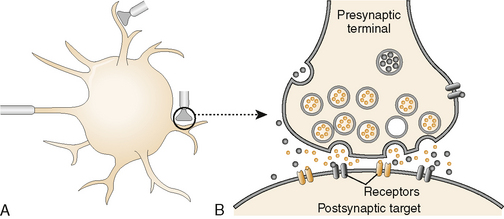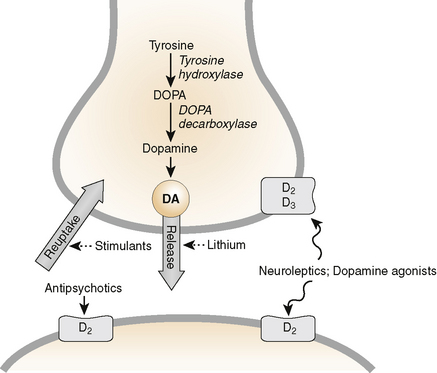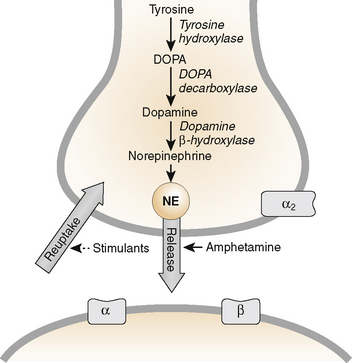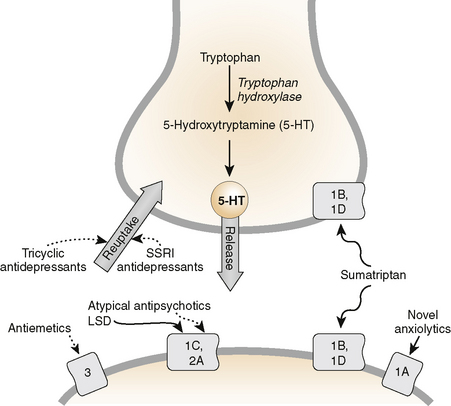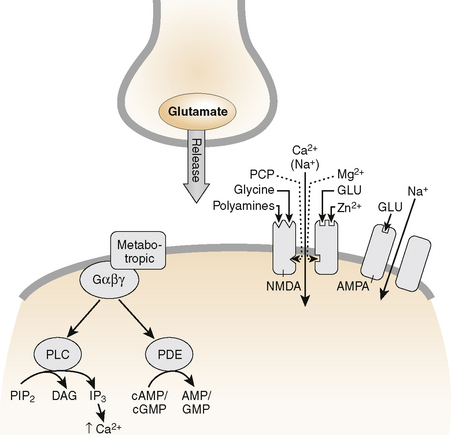Chapter 7 CNS Introduction, and Sedative-Hypnotic and Anxiolytic Drugs
I. CNS Introduction: See Rapid Review Neuroscience, Chapters 4 to 6, for a review of principles needed to understand how drugs affect neurobiological processes.
a. Slower and more complex signaling process than via electrical synapses; important for actions of most CNS drugs
(1) Release of neurotransmitter from the presynaptic terminal requires calcium; enters through voltage-dependent calcium channels.
• Space between presynaptic axon terminal and postsynaptic membrane through which transmitter diffuses
(1) Binding of neurotransmitter activates second-messenger pathways by way of guanosine triphosphate-binding (G proteins).
3. Norepinephrine (NE); Fig. 7-4; also review Fig. 3-2B for syntheses, storage release and inactivation
b. Activation of α-amino-3-hydroxyl-5-methyl-4-isoxazole-propionate (AMPA) or kainite receptors is excitatory.
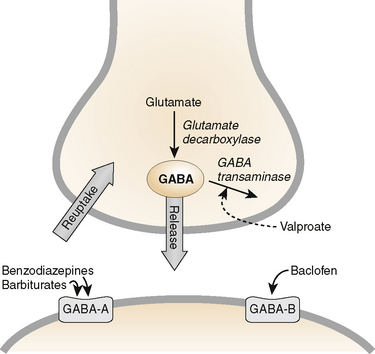
7-7 Chemistry and pharmacology of the γ-aminobutyric acid (GABA) synapse.
(From Weyhenmeyer JA and Gallman EA: Rapid Review Neuroscience. Philadelphia, Mosby, 2007, Figure 6-6.)
GABA is the major inhibitory neurotransmitter in brain.
Decreased GABA activity or increased glutamate activity lead to seizures.
Stay updated, free articles. Join our Telegram channel

Full access? Get Clinical Tree


